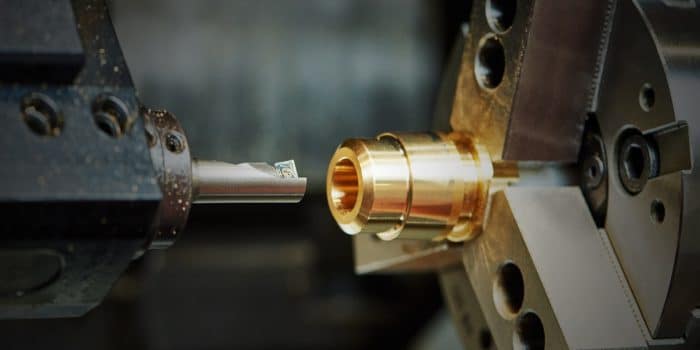Five Reasons to Use Bronze in Metal Fabrication

When you think of metal fabrication, steel and aluminum are the metals that come to mind first. Steel and aluminum remain the top two materials used at Meta Fab. But what about bronze? Bronze has a few instances where its the perfect material to use and has been around for just as long as the other two metals previously mentioned. In fact, in the larger manufacturing world, bronze remains one of the most commonly used metals for fabrication to this day. That’s for good reason. Bronze’s versatility and range of different applications make it a tremendously popular metal for all types of projects. While we do not use bronze very often here at Meta Fab, we wanted to let you know what it is and when it is best used.
What is Bronze?
Dating back to the ancient Sumerians around 3500 B.C., bronze is an alloy made of copper and tin. Other metals can also be included such as manganese, aluminum, zinc and nickel. Uses of the metals in the creation of different alloys all have their own characteristics like hardness, flexibility, and ductility to name a few. A few specific benefits of bronze are as follows;
Benefits of Bronze
- Cost-effectiveness
- Excellent surface finishes
- High dimensional precision
- High thermal and electrical conductivity
- Non-magnetic and non-sparking properties
- Resistance to corrosion and metal fatigue
Best Uses for Bronze
-
Small Parts and Panels
Due to its corrosion resistance and unique coloring, bronze is commonly used in the manufacture of coins, hardware mounts, furniture trim, ceiling or wall panels, ship hardware, and all sorts of automobile parts.
-
Sculptures
Maybe more than any other metal, bronze is used for artful forms of sculpture. Bronze, in particular, has been the preferred metal for sculptures because of its ability to expand just before it sets. This property allows for the most intricate details to be brought to life.
Additionally, bronze constricts as it cools making it easier to remove the mold.
-
Musical Instruments
The bronze alloy commonly known as bell metal has long been the preferred choice of metal for bells and cymbals. This is largely because of its timbre and durability.
Bronze is also a great choice for the windings of nylon and steel strings in instruments like pianos and guitars.
In recent years, instrument manufacturers have also started making saxophones.
If you’re in the market for a high-end musical instrument with precise timbre and tuning, chances are bronze is incorporated somewhere in the production.
-
Architecture
If you’re looking to build a structure that stands the test of time and preserves its original, natural look, bronze is a great choice.
Whereas other metals will undoubtedly patina over time, bronze’s raw, pinkish finish can be maintained with frequent oiling and polishing. Treatment of architectural bronze can also be achieved through periodic applications of specialized lacquers.
-
Safety Tools
Steel tools like hammers, mallets, axes, and wrenches can cause sparks. If they’re used in close proximity to flammable materials, they can pose a serious safety hazard.
That’s exactly why bronze has become an increasingly popular material for these tools. It’s non-magnetic and spark-free properties virtually ensure safety, even when working around flammable objects.
Final Thoughts
Bronze has been around for thousands of years and it’s not going away any time soon. It’s resistance to corrosion, countless alloy combinations, and durability make it the perfect choice for a whole host of metal fabrication endeavors.
If you have questions about how bronze might be best incorporated into your next metal fabrication project, give us a call at MetaFab today in Hillsboro, Oregon. Our friendly experts are standing by, waiting to assist you however they can.